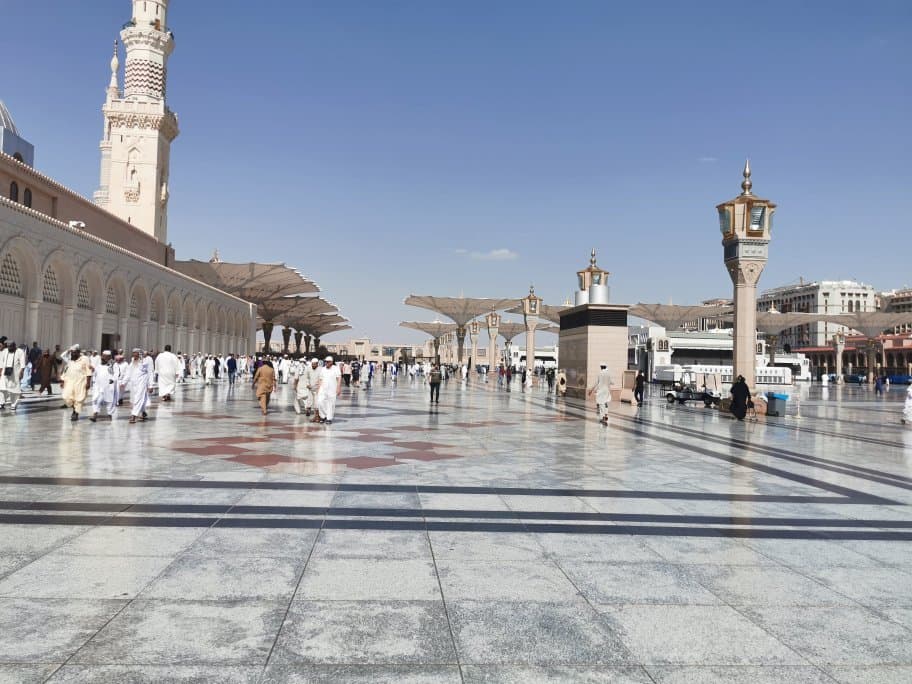
Jannat al-Baqi
The sacred cemetery of Madinah, resting place of the Prophet's family and companions, offering profound spiritual connection and historical reflection...
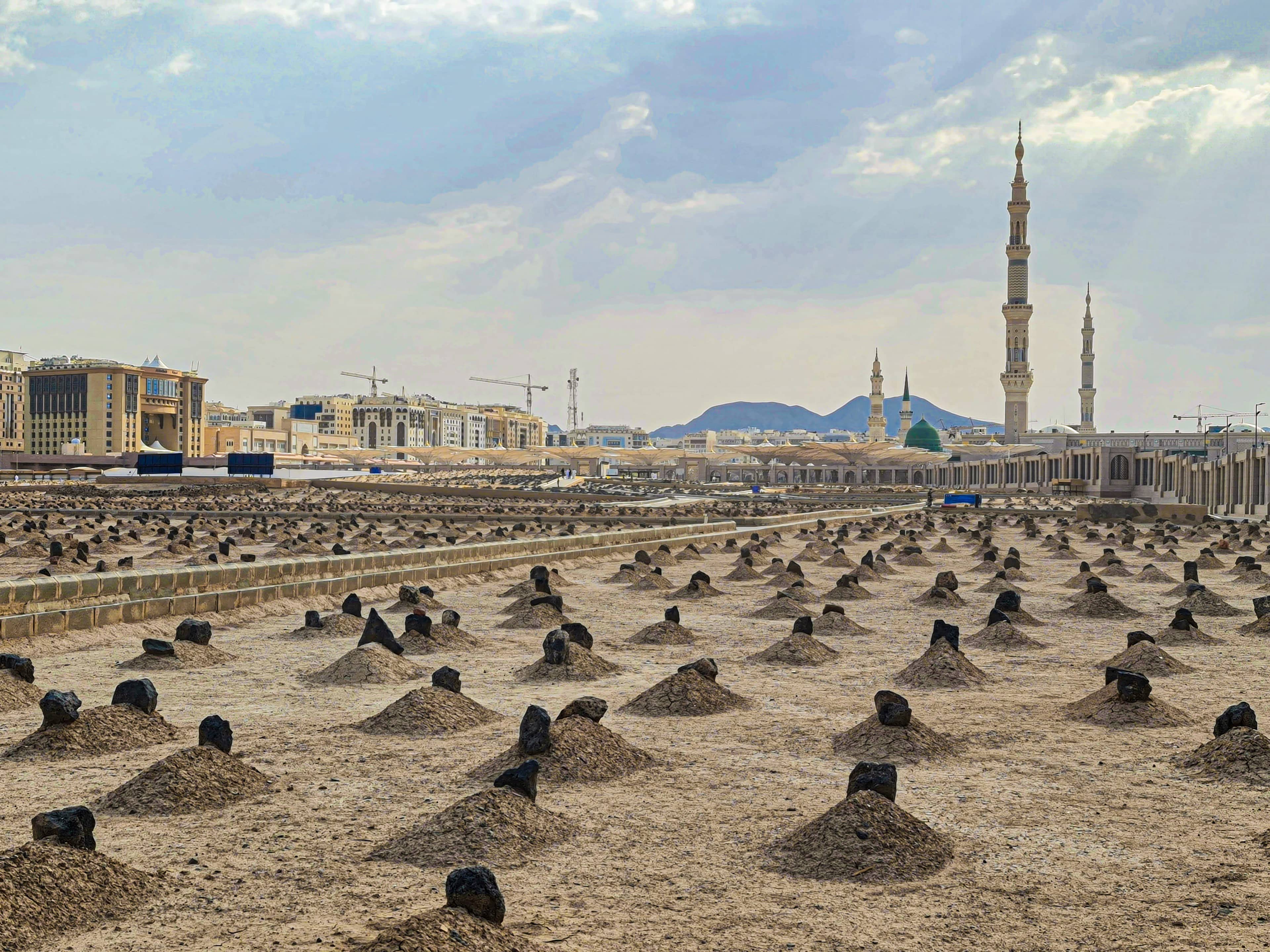
Highlights
Must-see attractions
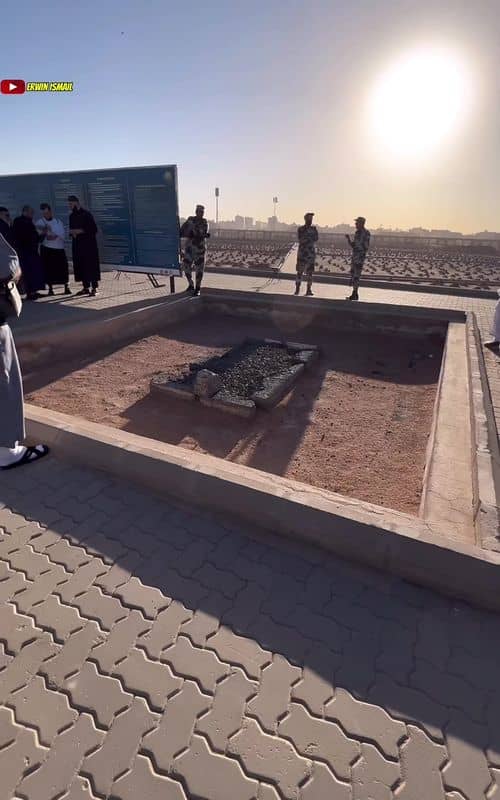
Social
From TikTok & Reddit
Best Time
Quieter, cooler, and longer access

Jannat al-Baqi
Best Time
Quieter, cooler, and longer access

Highlights
Must-see attractions
The sacred cemetery of Madinah, resting place of the Prophet's family and companions, offering profound spiritual connection and historical reflection.
"A serene, sacred place to visit, especially for Muslims seeking a connection with Islamic history."
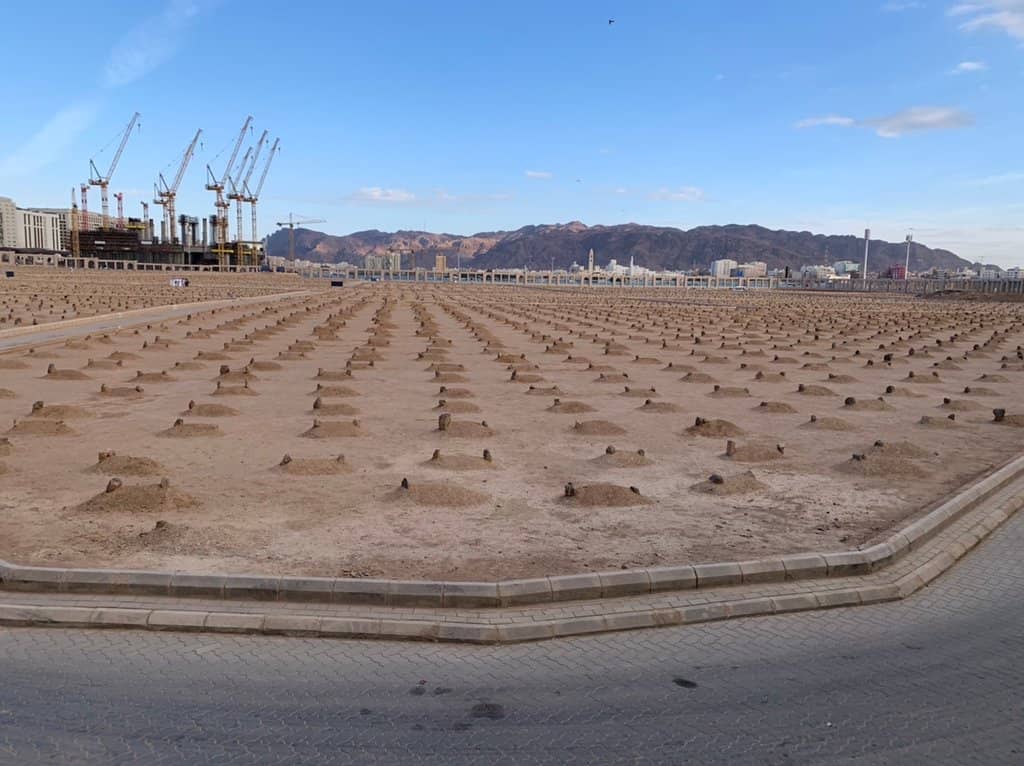
Dress Modestly
Wear loose, modest clothing covering arms and legs. Avoid bright colors. :womaninturban:
Maintain Silence
Speak softly or remain silent. This is a place of reverence and remembrance. :pray:
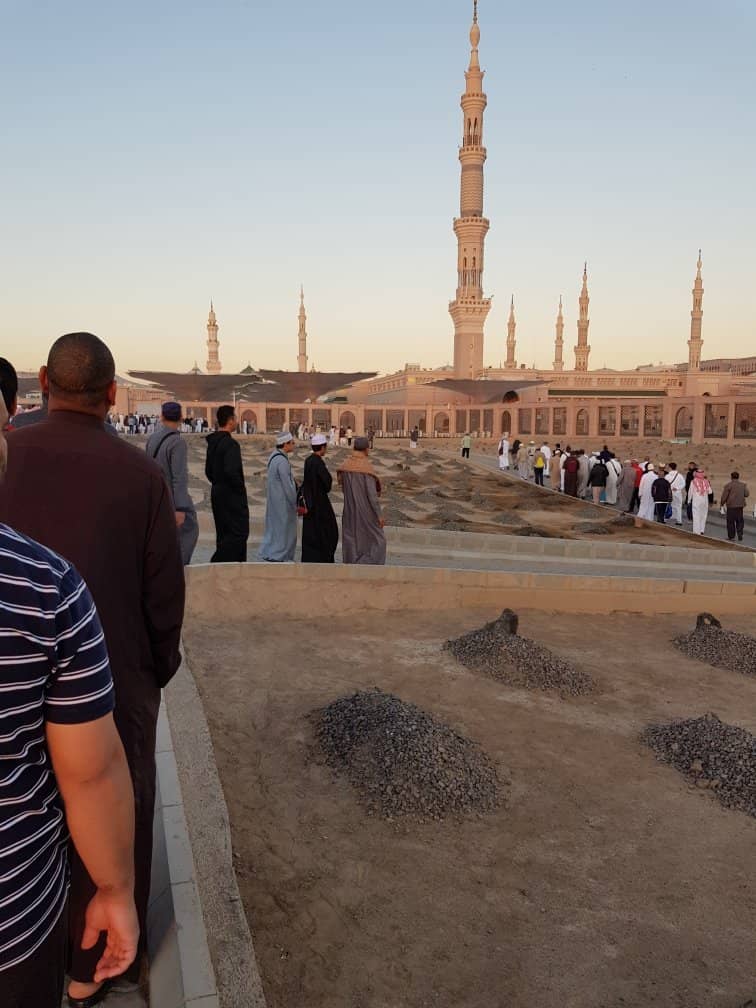
Highlights
Discover the most iconic attractions and experiences

Resting Place of Companions
Jannat al-Baqi
The final resting place of thousands of the Prophet Muhammad's companions, offering a profound connection to early Islamic history.
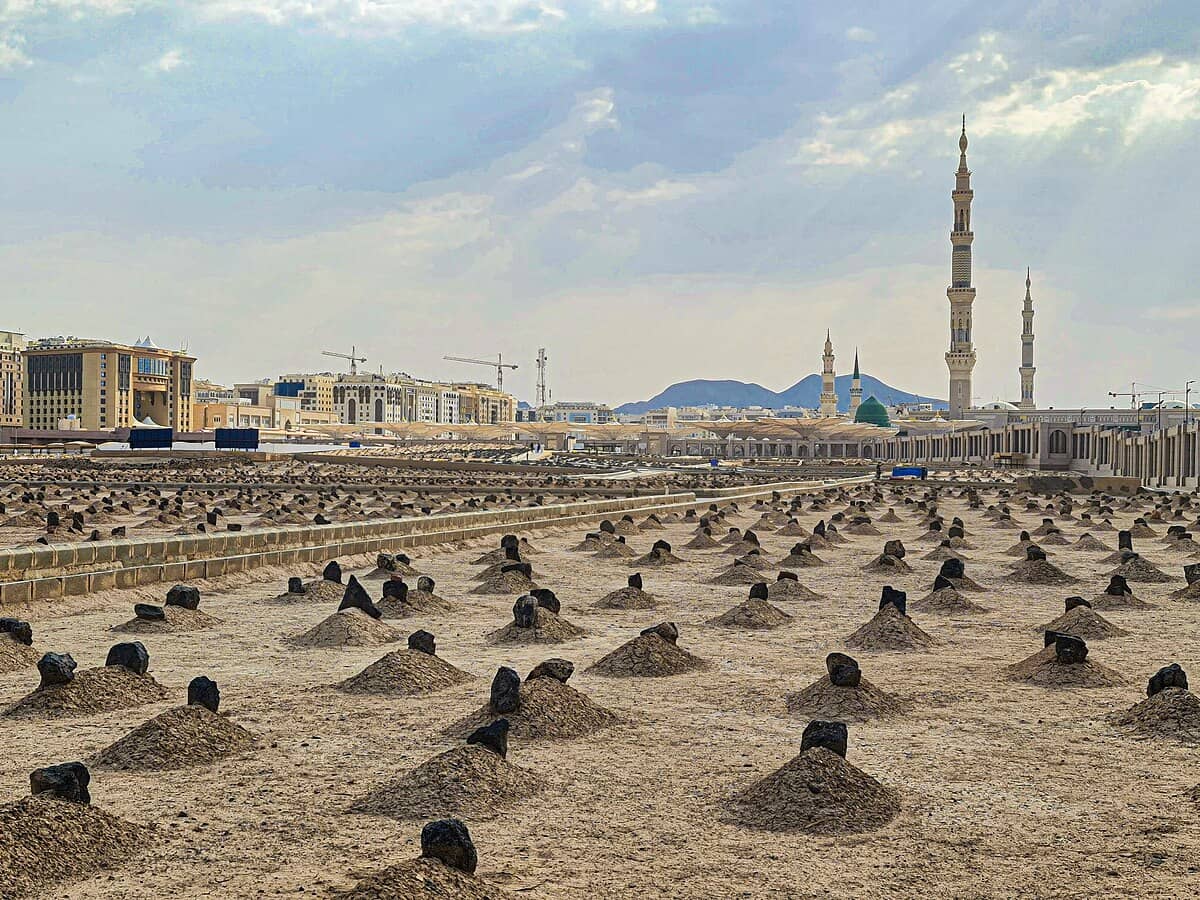
Family of the Prophet
Jannat al-Baqi
Home to the graves of many of the Prophet Muhammad's family members, including his wives and daughters.
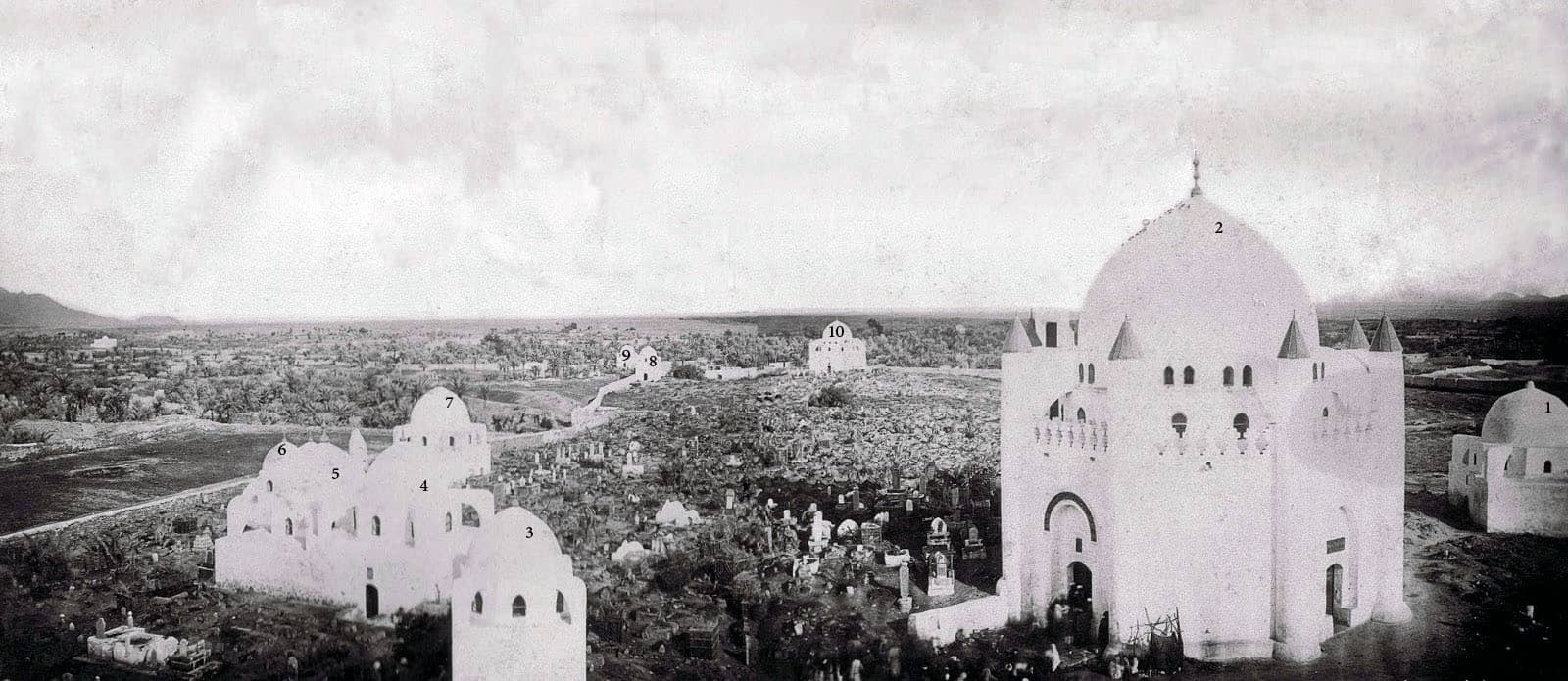
Imams' Tombs
Jannat al-Baqi
Contains the graves of four revered Shia Imams, making it a site of deep spiritual significance for Shia Muslims.
Plans like a pro.
Thinks like you
Planning Your Visit
Respectful Visitation
Visiting Hours & Access
Best Times
Insider Tips
from TikTok, Instagram & Reddit
Dress Modestly
Wear loose, modest clothing covering arms and legs. Avoid bright colors. :womaninturban:
Maintain Silence
Speak softly or remain silent. This is a place of reverence and remembrance. :pray:
Simple Graves
Graves are marked simply, often with stones. No elaborate structures. :rock:
No Photography Inside
Photography is generally not allowed inside the cemetery grounds. :camerawithflash:
Tips
from all over the internet
Dress Modestly
Wear loose, modest clothing covering arms and legs. Avoid bright colors. :womaninturban:
Maintain Silence
Speak softly or remain silent. This is a place of reverence and remembrance. :pray:
Simple Graves
Graves are marked simply, often with stones. No elaborate structures. :rock:
No Photography Inside
Photography is generally not allowed inside the cemetery grounds. :camerawithflash:
Make Dua
Use your time to make prayers and supplications for the deceased. :dove:
What Travellers Say
Reviews Summary
Jannat al-Baqi is revered as a deeply spiritual and historically significant Islamic cemetery in Madinah. Visitors are moved by its connection to the Prophet Muhammad's family and companions, finding it a place of profound reflection and reverence. While the simplicity of the graves and the solemn atmosphere are appreciated, the restricted access and inability for women to enter are notable limitations.
"Jannat al-Baqi‘ – The Blessed Cemetery of Madinah
Jannat al-Baqi‘, also known as al-Baqi‘ al-Gharqad, is located on the eastern side of Al-Masjid an-Nabawi in Madinah. It is the earliest and most significant Islamic cemetery, where thousands of Companions of the Prophet ﷺ, members of the Ahl al-Bayt, Tabi‘een, and great personalities of the Ummah are buried.
Religious and Historical Significance:
This is the cemetery where Prophet Muhammad ﷺ instructed the burial of his family members and many of his Companions.
Most of the Mothers of the Believers (Ummahat al-Mu’mineen, the wives of the Prophet ﷺ) are buried here.
Notable figures resting here include: Prophet’s son Ibrahim (RA), Caliph Uthman ibn Affan (RA), Imam Hasan ibn Ali (RA), Imam Ali Zayn al-Abidin (RA), Imam Muhammad al-Baqir (RA), and Imam Ja‘far al-Sadiq (RA).
The Prophet ﷺ himself would often visit al-Baqi‘, supplicate for its people, and remind his followers about the reality of life and death.
Spiritual Experience:
The cemetery is simple in appearance, without elaborate structures, yet it carries a profound spiritual weight. For millions of Muslims, visiting Jannat al-Baqi‘ is a deeply humbling and emotional part of their journey to Madinah.
Visiting Guide:
Located directly beside Al-Masjid an-Nabawi, easily accessible after prayers.
The gates are usually opened for visitors for a short time after Fajr and Asr prayers.
Visitors are encouraged to maintain silence, dignity, and make du‘a for the deceased, as this is the resting place of some of the greatest figures in Islamic history.
Jannat al-Baqi‘ is not just a cemetery — it is a living chapter of Islamic history and a reminder of the legacy of the Prophet’s family and companions. Stepping inside fills the heart with humility and reflection."
Farrukh Ahmad
"Jannat al Baqi is the oldest and first Islamic cemetery in Medina. Also known as Baqi al Gharqad, it is located on the eastern side of Masjid al-Nabawi (near gate 362 of the Prophet's Mosque).
Many of the Prophet's ﷺ family members, relatives, thousands of companions, and prominent figures of early Islam are buried in Jannat al-Baqi. It is one of the two most significant Islamic cemeteries, alongside Jannat al-Mu'alla in Mecca. The Arabic term "Al-Baqi" means "The Everlasting" or "The Eternal," one of Allah's 99 names.
The cemetery opens twice a day for common people - after fazr for 3 hours (recommended time to visit) and after asr for 1 hour. Women are not permitted to visit inside. During our visit, there was a little delay in the queue in front of gate 362 of the Prophet's Mosque. It is a one-way road from that gate, and it takes roughly an hour to complete the visit.
The cemetery area was first estimated as 80 square meters. Muawiya Ibn Abi Sufyan was the first to extend it. Then additional extensions occurred until it encompassed an area of around 180,000 square meters (~45 acres). The expansion is still ongoing and predicted to become 300,000 square meters."
Mehedi Farazi
"Al Baqi Cemetery in Madinah is a deeply spiritual and historical site. Resting place of many of Prophet Muhammad’s family and companions, it evokes reflection and reverence. A serene, sacred place to visit, especially for Muslims seeking a connection with Islamic history."
Saad Usmani
What People Like
What People Dislike
Frequently Asked Questions
🚇 🗺️ Getting There
Jannat al-Baqi is located just southeast of Masjid an-Nabawi in Madinah. It's easily accessible on foot, typically near gate 362 of the Prophet's Mosque. Many visitors walk there directly after prayers.
No, Jannat al-Baqi is situated right beside Al-Masjid an-Nabawi, making it very convenient to visit.
Taxis can drop you off near the entrance, but access inside is restricted to walking. The proximity to the mosque makes walking the most common method.
The most straightforward way is to walk from Masjid an-Nabawi after Fajr or Asr prayers. It's a short and significant journey.
Its primary landmark is its adjacency to Al-Masjid an-Nabawi, the Prophet's Mosque.
🎫 🎫 Tickets & Entry
No, tickets are not required to enter Jannat al-Baqi. Entry is free for all visitors during designated hours.
The cemetery is typically open for visitors for a short period after Fajr prayers (around 3 hours) and again after Asr prayers (around 1 hour). Timings can vary.
Currently, women are generally not permitted to enter Jannat al-Baqi.
A visit usually takes about an hour, allowing time for reflection and prayer as you walk through the grounds.
There is no entry fee. The site is a sacred space accessible to all during its open hours.
🎫 🧭 Onsite Experience
You'll see a vast cemetery with simple, unmarked graves, many marked by stones. It's a place of quiet reflection, not elaborate monuments.
Photography is generally prohibited inside the cemetery to maintain respect for the deceased and the sanctity of the site.
It's the oldest Islamic cemetery and the resting place of many companions, family members of Prophet Muhammad, and revered Imams, holding immense spiritual importance.
Visitors are encouraged to make dua (supplications) and offer peace to the deceased. It's a place for quiet contemplation and remembrance.
Graves are typically marked with simple stones. Larger stones might indicate a man's grave, and smaller ones a woman's, but names are not usually present.
📸 📸 Photography
Photography is generally not permitted inside Jannat al-Baqi to ensure the sanctity and respect of the burial ground.
You can capture exterior views of the cemetery walls and its proximity to Masjid an-Nabawi from outside the grounds.
The restriction is to maintain the solemn atmosphere and respect for the deceased, as it is a sacred burial site.
The surrounding areas and the view of the cemetery walls from outside can be photographed, especially during dusk.
Dusk or dawn can offer beautiful lighting for exterior shots of the cemetery walls and its surroundings.
For Different Travelers
Tailored advice for your travel style
👨👩👧 Families with Kids
If visiting with older children who understand the significance of the site, it can be a valuable educational experience about Islamic history and the concept of mortality. Ensure they are dressed modestly and understand the importance of respectful behavior. The short visiting hours also mean planning is essential to make the most of the opportunity.
Spiritual Seekers
It's a place to contemplate life, death, and the legacy of those who sacrificed for their faith. Making dua and seeking blessings here is a central part of the experience for many pilgrims. The proximity to Masjid an-Nabawi makes it an integral part of a visit to Madinah for those seeking spiritual enrichment.
Deep Dives
In-depth insights and expert knowledge
Historical and Spiritual Significance
This sacred ground is where many of the Mothers of the Believers (the Prophet's wives) are buried, along with his son Ibrahim, Caliph Uthman ibn Affan, and the Shia Imams Hasan ibn Ali, Ali Zayn al-Abidin, Muhammad al-Baqir, and Ja'far al-Sadiq. For Muslims worldwide, a visit to Jannat al-Baqi is a deeply humbling and emotional experience, offering a tangible connection to the foundational figures of Islam.
The cemetery's simplicity, with its unmarked graves, underscores the Islamic emphasis on equality in death and the focus on the hereafter rather than worldly possessions. It serves as a powerful reminder of mortality and the importance of righteous deeds.
Visiting Etiquette and Practicalities
Access to the cemetery is typically limited to short periods following Fajr and Asr prayers. These visiting hours are crucial to note, as entry is restricted outside these times. It's important to be aware that women are generally not permitted to enter the cemetery grounds. The experience inside is one of quiet contemplation, where visitors are encouraged to make dua (supplications) for those buried there.
The graves themselves are marked very simply, often with just stones, reflecting an Islamic emphasis on humility. While some older videos might show different markings, the current state is one of understated reverence. The overall atmosphere is one of profound peace and reflection, making it a significant part of any spiritual journey to Madinah.

Social
from TikTok, Instagram & Reddit